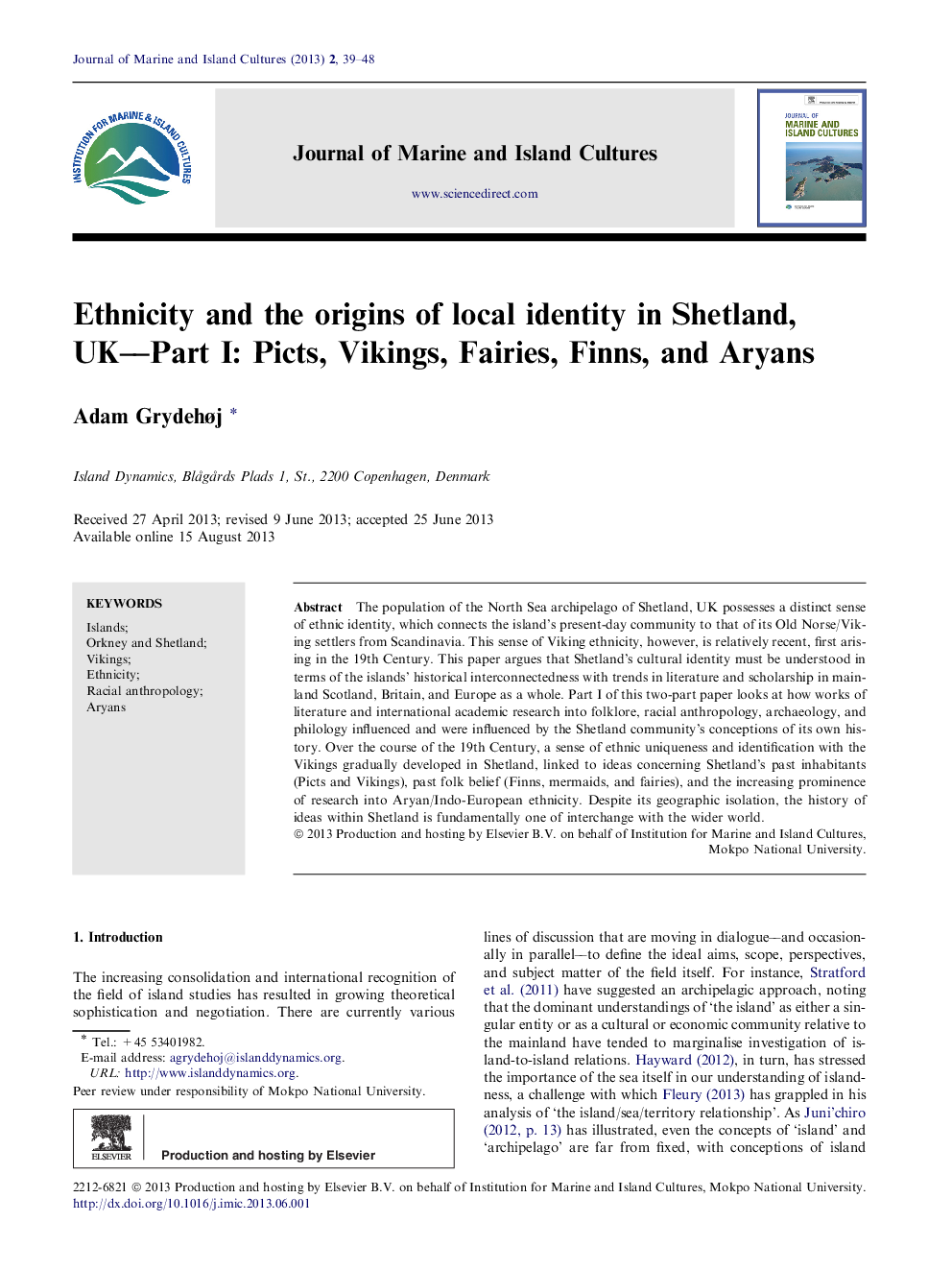| Article ID | Journal | Published Year | Pages | File Type |
|---|---|---|---|---|
| 1107069 | Journal of Marine and Island Cultures | 2013 | 10 Pages |
•Shetlanders did not feel Scandinavian or Viking identity until the mid-1800s.•Shetland’s trows can be identified with British and Continental fairies.•Shetland author Saxby starts conflating trows and Picts in the late 1800s.•Contemporary accounts of Fin-men/Finns are limited to Orkney and not supernatural.•Constant intellectual exchange between Shetland, Scottish, and European authors.
The population of the North Sea archipelago of Shetland, UK possesses a distinct sense of ethnic identity, which connects the island’s present-day community to that of its Old Norse/Viking settlers from Scandinavia. This sense of Viking ethnicity, however, is relatively recent, first arising in the 19th Century. This paper argues that Shetland’s cultural identity must be understood in terms of the islands’ historical interconnectedness with trends in literature and scholarship in mainland Scotland, Britain, and Europe as a whole. Part I of this two-part paper looks at how works of literature and international academic research into folklore, racial anthropology, archaeology, and philology influenced and were influenced by the Shetland community’s conceptions of its own history. Over the course of the 19th Century, a sense of ethnic uniqueness and identification with the Vikings gradually developed in Shetland, linked to ideas concerning Shetland’s past inhabitants (Picts and Vikings), past folk belief (Finns, mermaids, and fairies), and the increasing prominence of research into Aryan/Indo-European ethnicity. Despite its geographic isolation, the history of ideas within Shetland is fundamentally one of interchange with the wider world.
